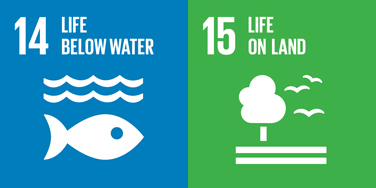If Earth was a spaceship, how would you manage its life-support system?
Many monetary assessments of our life-support system, or natural capital as some call it, conclude it is not worth much. Currently, very little of the global GDP trickles back to those who manage and care for the planet. Farms, forests, parks, wetlands, lakes, and oceans all support life. Yet they are also under enormous pressure. And without the life support system, nothing else is possible. Therefore, humanity’s quality of life — survival even — is dependent on the health of our planet’s biological resources or “web of life.”
Fertile soil, clean water, and clean air are necessary to provide humanity with the food and physical health we require to thrive. Vibrant natural ecosystems such as oceans and forests are indispensable to keep our planet livable, for example, by regulating the climate and absorbing carbon emissions. They also help keep humans psychologically and spiritually-grounded.
Given the massive overuse of the planet’s biological resources, our economies now are limited by the availability of Earth’s biocapacity. To ensure we have a healthy planet that can support us now and in the future, requires reducing human demand and maintaining our planet’s life-support system. The good news is, solutions already exist to boost the health of our ecosystems, and in turn, the planet’s capacity to regenerate biological resources. See the Power of Possibility for how many days healthy biosphere interventions can #MoveTheDate of Earth Overshoot Day. They’re creative, economically viable, and ready to deploy at scale. With them, we can make ourselves more resilient. If we move the date 6 days each year, humanity can be out of overshoot before 2050.
The interventions fall into three main categories:
- Classical conservation ― Efforts to protect and preserve wild spaces, particularly biodiversity hotspots. E.O. Wilson suggests that it would take half of the planet’s biocapacity to secure about 85% of biodiversity. Many organizations have supported such conservation efforts, including WWF who has worked on strengthening countries’ and regions’ park systems, and other organizations who have secured conservation easements on private and public properties.
- Restoration ― Many ecosystems have been overused and need to be restored. For example, forests converted to raise cattle in the province of Guanacaste in Costa Rica has led to land deterioration. With restoration, some of that land is now being reforested. Similar efforts have been made around the world, from China to Ethiopia. Reforestation of tropical forests and mangroves has the triple benefit of increasing biodiversity, sequestering carbon dioxide, and acting as flood barriers during hurricanes for coastal urban areas in the tropics and sub tropics. Trees have been the focus of the youth organization Plant for the Planet leading to their ambitious One Trillion Trees campaign.
- Regenerative agriculture and sustainable fishing ― To keep feeding humanity, we need to find ways of farming that maintain soil-productivity, groundwater levels, water cycles, and genetic diversity, while avoiding contamination. Regeneration is becoming an international movement and there are growing numbers of exciting examples, such as this one in Patagonia. Sustainable fishing is another aspect. It supports overall ocean health, and helps ensure that the ocean continues to provide for generations to come (approx. 3 billion people rely on seafood as their primary source of protein, especially in low-income countries). A healthy ocean also needs acidification to be slowed by controlling carbon emissions, since the ocean currently absorbs 30% of our carbon emissions.
 These solutions align with the UN Sustainable Development Goals (SDGs) 14 and 15 which call to conserve and sustainably use marine resources, and protect, restore and promote the sustainable use of terrestrial ecosystems, respectively. To be sustainable, development ultimately must also fit within our planet’s resource budget.
These solutions align with the UN Sustainable Development Goals (SDGs) 14 and 15 which call to conserve and sustainably use marine resources, and protect, restore and promote the sustainable use of terrestrial ecosystems, respectively. To be sustainable, development ultimately must also fit within our planet’s resource budget.






